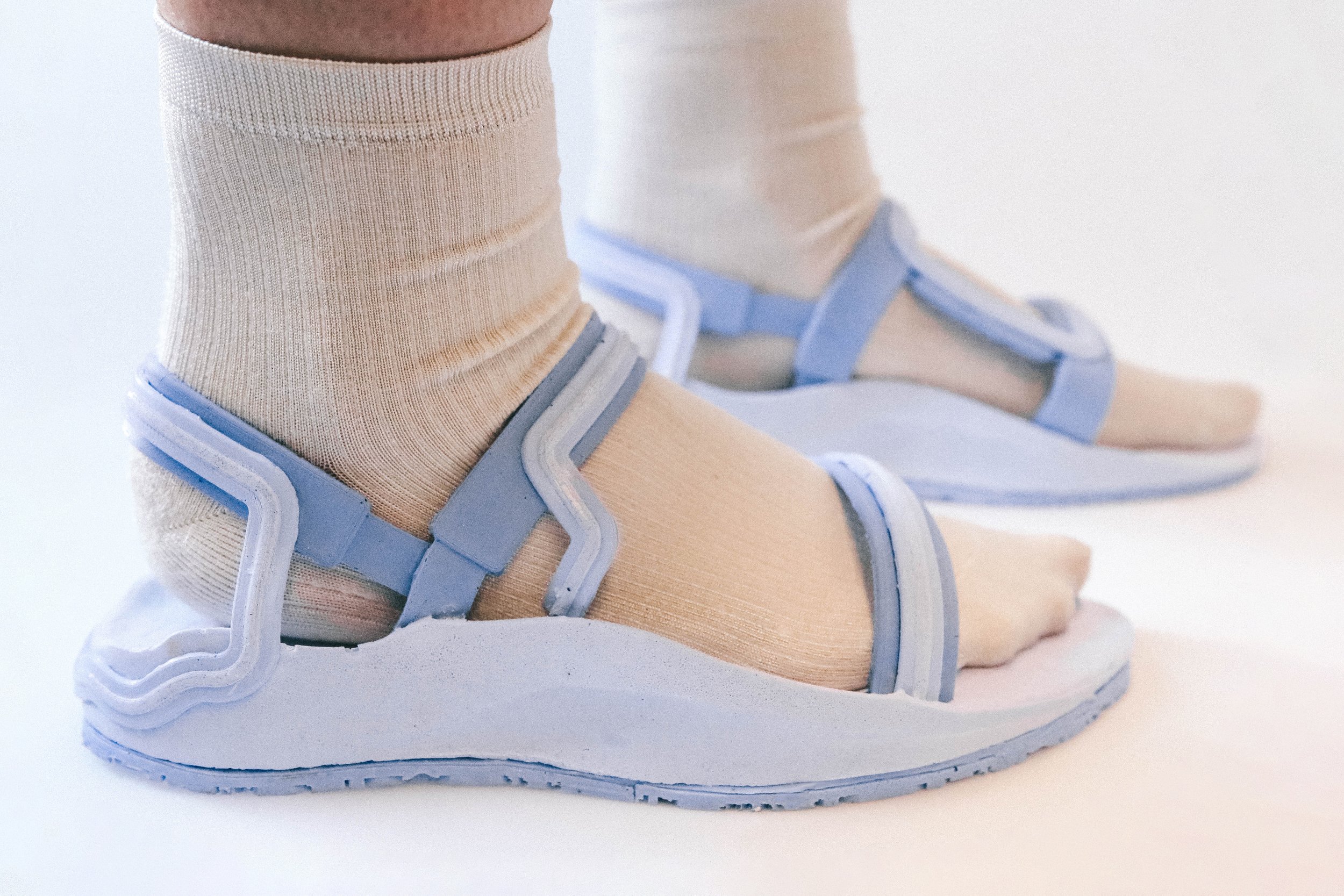Case Study 02
Sans: Combining the benefits of barefoot running with the comfort of traditional performance running shoes.
Client: Self Directed
Year: 2019
Role: Lead Industrial Designer
Design Goals: Building on my skillset learned at adidas to have a publicly available projected centered on Footwear Design.
Performance runners ideally trade their running shoes in every 300 miles to retain cushion and comfort. For some elite runners that’s every 3 weeks. Sans aims to emphasize the “without.” A lightweight, performance running shoe that enhances a runners VO2 Max, and provides comfort and control where necessary.
Examining the market
In hot climates the current performance footwear market does not provide adequate options for serious runners. Current running shoes-while they may boast a variety of colorways, cushioning, support systems and lacing optionshave not changed much in structure over the past few decades. In hotter climates, like Arizona, runners are forced to make a decision between ventilation and cushion. There are several shoes on the market that boast to be the ultimate running sandal, with their goal being to provide a barefoot running experience. While this is a great fit for some, many runners prefer the cushion that current performance running shoes provide.
finding inspiration
Given the nature of exploring a shoe made of “opposites” intense comfort and cushion, paired with a lightweight upper, I sought inspiration from that duality. Harsh and rigid paired with soft, organic and flexible textures and materials are all represented.
Concept validation + testing
Before moving forward with designing a running sandal I thrifted two pairs of running shoes, removed different sections of each, and had competitive runners test them for two miles each.
Key Learnings
-
Open sandals leave room for the metatarsals to expand a natural amount , increasing the comfort for runners.
-
Scientific research suggests that opening the heal counter for running shoes can increase a runner’s VO2 max by upwards of 4% which allows for a faster pace, as well as increasing ventilation.
-
30% of the midsole cushion is lost due to heat over the course of a three mile run. Runners who are running longer distances are running on less comfortable and cushioned shoes.
Prototyping + Modeling
After testing and validating my concept, I began exploring different prototyping and model making processes. In order to build a final looks like model I learned about different casting methods using silicone, expanding foam and other plastics.
Midsole Prototyping
-
In order to minimize parting lines from the mold I made three different versions of the mold with parting lines at different points of the model.
-
I wanted to make a full pair of shoes, so in order to do so I had to both model, print and mold a left and right midsole custom fit to my size 7 last.
upper prototyping
-
In order to achieve the design I had in mind, I had to mold two materials together using the same mold. I began with a small syringe by piping in the finer linework into the mold, and then allowed it to cure and then followed with the darker color to achieve a two tone effect.
-
Each upper design began in a flat mold, so in order to refine the fit I used tape and fabric to make closer measurements, and then mimicked them in flat cad.
outsole prototyping
-
I cast a variety of different tread types to get an understanding of which treats would work best for my use case.
-
In order to make a variety of colorways that I tested with friends, I needed to make some custom colored materials to achieve the final model.
Once I had figured out my prototyping methods and validated my concept I moved forward with final refinements and model making.







